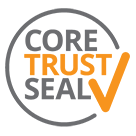The structural basis of substrate selectivity of the acinetobactin biosynthetic adenylation domain, BasE.
Ahmed, S.F., Gulick, A.M.(2025) J Biological Chem 301: 108413-108413
- PubMed: 40096888
- DOI: https://doi.org/10.1016/j.jbc.2025.108413
- Primary Citation of Related Structures:
9MY5, 9MY6, 9MY7 - PubMed Abstract:
Siderophores are small molecule natural products that are often produced by enzymes called nonribosomal peptide synthetases that many pathogenic bacteria produce to adapt to low iron conditions. Nonribosomal peptide synthetase bioengineering could lead to the production of siderophore analogs with the potential to interrupt this unique bacterial iron uptake system, endowing the molecules with antimicrobial properties. Acinetobacter baumannii produces the catecholate siderophore acinetobactin to scavenge iron, a nutrient essential for several metabolic processes. Previous studies have reported synthetic analogs of acinetobactin that disrupt iron acquisition by A. baumannii, resulting in inhibition of bacterial growth. To foster a long-term goal of using a chemoenzymatic approach to produce additional analogs, we have targeted the adenylation domain BasE for the incorporation of alternate substrates. Here, we report a structure-guided approach to investigate the substrate selectivity of BasE for non-native aryl substrates. Using targeted mutagenesis in the active site of BasE, we generated mutants that catalyze the activation of alternate substrates with catalytic efficiencies comparable to the WT enzyme with its natural substrate 2,3-dihydroxybenzoic acid. We further solved structures of these mutants bound to the non-native substrates that illustrate an expanded binding pocket that support the improved promiscuity of BasE. Motivated to develop an approach to produce analogs of acinetobactin, including molecules that could block iron uptake or be readily conjugated to antibiotic cargo, our work aims to develop a structure-guided approach for using catecholate siderophore pathways to incorporate alternate substrates.
Organizational Affiliation:
Department of Structural Biology, University at Buffalo, Buffalo, New York, United States.



















